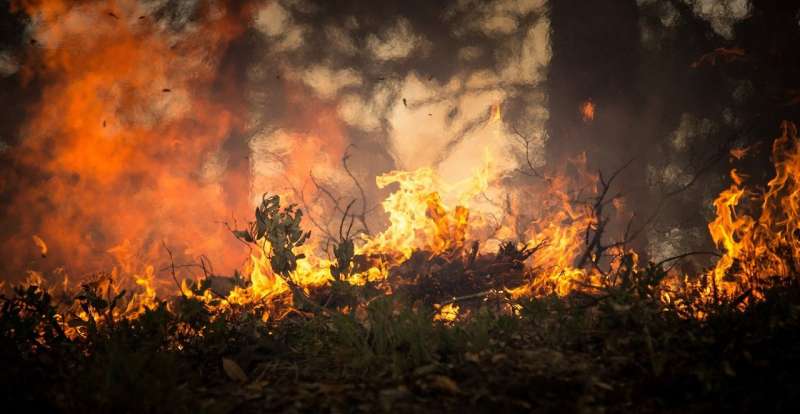California releases new climate science, planning tools to prepare for climate change impacts

The State of California today released California's Fourth Climate Change Assessment, which details new information on the impacts of climate change and provides planning tools to support the state's response.
Among the assessment's warnings are that two-thirds of Southern California's beaches could completely disappear and the average area burned by wildfires could nearly double by 2100. Dan Cayan, a climate scientist at Scripps Institution of Oceanography at the University of California San Diego, served as editor-in-chief of the assessment and researchers from Scripps and California Sea Grant contributed to several of its technical and summary reports.
"To prepare for climate changes and to avoid possible catastrophic impacts, California needs a massive platter of scientific information," Cayan said. "The Assessment supplies such information in finer spatial detail and with greater attention to episodic events, illustrating an extensive set of changes that may confront us over the next several decades."
The compilation of original climate research includes 44 technical reports and 13 summary reports on climate change impacts to help ready the state for a future punctuated by severe wildfires, more frequent and longer droughts, rising sea levels, increased flooding, coastal erosion and extreme heat events. The peer-reviewed research translates global models into scaled-down, regionally-relevant reports to fill information gaps and support decisions at the local, regional and state levels.
"In California, facts and science still matter," said Governor Edmund G. Brown Jr. "These findings are profoundly serious and will continue to guide us as we confront the apocalyptic threat of irreversible climate change."
California has completed three prior Climate Change Assessments. Since the release of California's Third Climate Change Assessment in 2012, the state has experienced several of the most extreme natural events in its recorded history, including a severe five-year drought, an unprecedented tree mortality crisis, damaging floods driven by atmospheric rivers, and increasingly large and destructive wildfires.
The Fourth Assessment suggests these events will worsen in the future. Among the key findings:
- Wildfire: Climate change will make forests more susceptible to extreme wildfires. By the year 2100, if greenhouse gas emissions continue to rise, one study found that the average area burned by wildfires would increase 77 percent and the frequency of extreme wildfires burning more than 25,000 acres would increase by nearly 50 percent. In the areas that have the highest fire risk, the cost of wildfire insurance is estimated to rise by 18 percent by 2055. Additionally, the percentage of property insured in California would decrease.
- Sea-Level Rise: Under mid to high sea-level rise scenarios, up to 67 percent of Southern California beaches may completely erode by 2100 without large-scale human interventions. Statewide damages could reach nearly $17.9 billion from inundation of residential and commercial buildings if sea-level rise reaches 20 inches, which is within range of mid-century projections. A 100-year coastal flood, on top of this level of sea-level rise, would almost double the cost of damages. Updated modeling can help local planners analyze vulnerabilities in their area.
- Energy: Higher temperatures will increase annual electricity demand for homes, primarily for use of air conditioning units. High demand is projected in inland regions and Southern California. More moderate increases are projected in cooler coastal areas. Increases in peak hourly demand during the hot months of the year could be more pronounced. This is a critical finding for California's electric system, because generating capacity must match peak electricity demand.
- Extreme Heat Events and Impacts on Public Health: Heat-related illnesses and deaths are projected to worsen drastically throughout the state. By mid-century, the Central Valley is projected to experience heat waves that average two weeks longer than those today, and the hot spells could occur four to 10 times more often in the Northern Sierra region. A new California Heat Assessment Tool (CHAT) could support public health departments as they work to reduce heat-related deaths and illnesses.
The latest reports also detail the unique and disproportionate climate threats to vulnerable communities and tribal communities, with a focus on working collaboratively with these communities on research and solutions for resilience.
In addition, a report set for release in early September will highlight how California can better integrate climate impacts in design processes for critical infrastructure. The report by a working group established by AB 2800 (Quirk) of 2016 reflects the expertise of multiple scientific and engineering disciplines to help design and construct infrastructure to withstand higher temperatures, more frequent and intense storms, drought, wildfires and sea-level rise.
To access Fourth Assessment technical reports, summary reports, online tools, climate projects and data, and other resources and information developed as part of California's Fourth Climate Change Assessment, please visit ClimateAssessment.ca.gov.
California will convene the Global Climate Action Summit in San Francisco next month. At the summit, representatives from subnational governments, businesses and civil society will showcase the surge of climate action around the world, and make the case that even more must be done.
Provided by University of California - San Diego




















